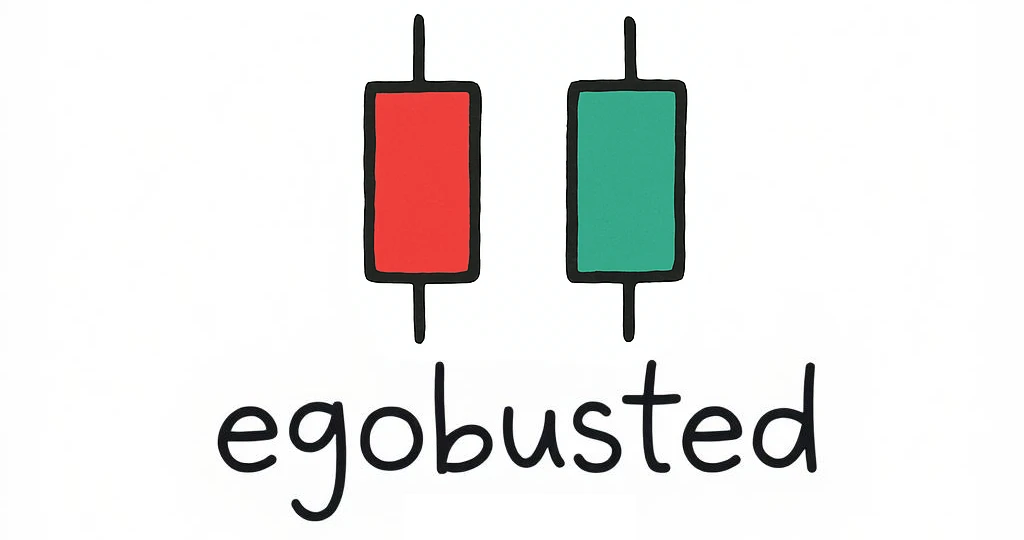A while back, on April 4th, 2025 (the day the NQ dropped 1000 points), a friend of mine was bearish and wanted to short. Following his trading strategy, he entered with a limit order but was quickly stopped out. Then, the NQ steadily declined, heading straight for his target price.
I told him I'm not a fan of using limit orders.
Assume Every Trade Is Wrong
I read a small book about trading a long time ago called “The Phantom of the Pits”. One rule in it deeply influenced me. The book stated:
“Rule 1: Assume every trade is wrong until the market proves it right.”
I believe that using a limit order is assuming the trade is correct and will play out as expected.
For example:
EURUSD presented a long setup during the London Session on March 25th, 2025.

Limit Orders Are More Prone to Being Stopped Out
Consider scenario (A). If you entered a long position with a limit buy at the 0.62 Fibonacci level, you would likely have been stopped out quickly, only to watch the price skyrocket upwards.
This reflects the speculator's conviction that EURUSD would complete its pullback at the 0.62 level and resume its upward movement.
The expectation of an upward move was correct, but it was prematurely stopped out by short-term volatility.
Wait for Confirmation Before Entering
Now consider scenario (B). If the speculator sees a setup and then:
- First assumes his idea is wrong.
- Then asks: how can I prove my idea is right? By looking for a price structure as evidence.
- Waits for confirmation to appear - the price moves up again, changing the price structure.
- The market proves the idea is correct, allowing for entry.
In this carefully selected example (B), the trade easily reached the target price for a profit after entry, requiring very little drawdown.
Confirming Setups with Multiple Timeframe Analysis
Early on, when I read Alexander Elder's “Trading for a Living”, I came across the concept of his “Triple Screen Trading System”.
Back then, I knew about it but didn't deeply grasp its true essence. It's only in the past year, as I've been seriously studying Price Action Trading, that I've come to understand this concept from a different perspective.
Integrating this Multiple Timeframe Analysis with the rules from “The Phantom of the Pits” has made my trading quite smooth and intuitive.
When you see the price trending upwards on the higher timeframes (like Daily and 4H), and then zoom in to a lower timeframe (like 15M) and also see upward movement, you can generally expect the overall direction for “today” to be likely upwards.
At this point, zooming in further to even lower timeframes (such as 5M or 1M) and waiting for a setup in the same direction allows for entry. When the market shows upward movement across all these timeframes, entering a trade then provides the highest degree of confirmation, increasing the probability of a successful profit.
Such a simple concept, yet it's actually quite difficult to put into practice, requiring you to overcome multiple psychological hurdles – greed, impatience, and FOMO.
Trade What You See, Not What You Think
Ever since I started learning Price Action Trading, this often-quoted trading adage that circulates online frequently comes to mind when I look at charts.
In Chinese-speaking trading circles, there are two terms: 'left-side trading' and 'right-side trading'. After understanding their meaning, my translation would be:
Predictive Trading (Left-Side Trading)
As mentioned earlier, entering with a limit order perfectly exemplifies Predictive Trading (Left-Side Trading). It's a trading approach centered around “what I think” will happen, and the trade unfolds based on that prediction.
Reactive Trading (Right-Side Trading)
Reactive Trading (Right-Side Trading), on the other hand, relies on 'market dynamics'. You wait for the market to give you signals before entering a trade.
In Closing
Starting with limit orders, we've touched upon some fundamental trading logic: Predictive Trading versus Reactive Trading – “I” being the driver versus 'the market' being the driver.
To become a consistent and profitable intraday scalper, I don't believe this is a matter of choosing a trading style. We must let the market take the lead, following its momentum when it's ready to move – Reactive Trading.

